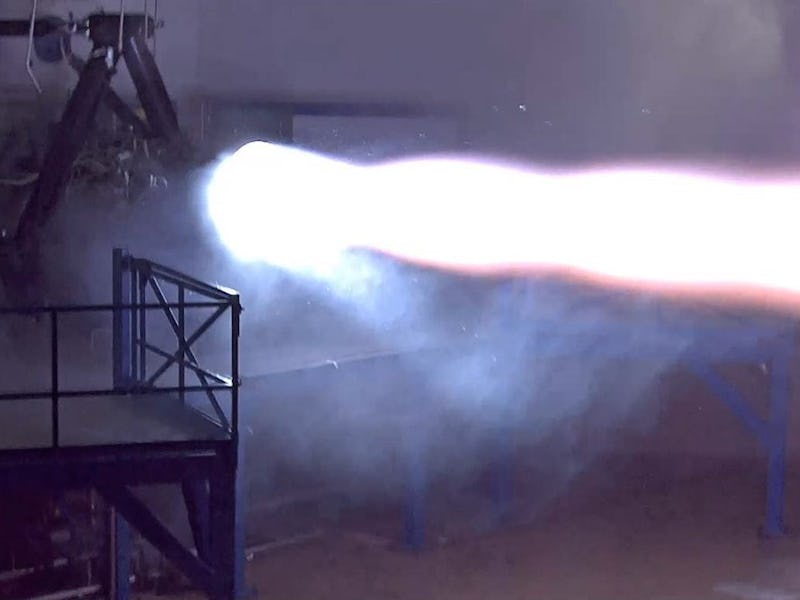SpaceX has completed the first live test of a rocket intended to transport humans to Mars, founder Elon Musk revealed on Twitter Monday. The successful firing of the Raptor interplanetary transport engine is good news for the Mars Colonial Transport Architecture, an ambitious plan to create a self-sustaining colony on the red planet.
While Musk said in a Reddit AMA session last year that the Raptor would have a thrust of around 230 metric tons, on Monday he tweeted that the production rocket would have around 310 metric tons of thrust, aiming for “specific impulse of 382 seconds.” The chamber pressure is triple that of the Merlin family of rockets, the ones used on its Falcon 9 vehicles.
Musk has publicly stated his goal to start missions to Mars in 2024, with the first humans landing on the planet the following year. Although himself a major proponent of interplanetary travel, Musk has previously avoided committing himself to the initial set of Mars journeys, a stance that makes sense considering SpaceX’s main headquarters are currently stationed on Earth.
The success of the Raptor test cuts to the core of why Musk founded SpaceX in 2002 in the first place. Beyond a mere private space travel venture, the company’s goal is to push humanity towards becoming a multi-planetary species, with the company’s About page declaring its goal as “to revolutionize space technology, with the ultimate goal of enabling people to live on other planets.”
SpaceX’s efforts to fulfil this dream have kicked into overdrive. On Tuesday, Musk is expected to deliver a speech entitled “Making Humans a Multiplanetary Species” at the annual International Astronautical Congress (IAC) in Guadalajara, Mexico. According to the event description, Musk is expected to “discuss the long-term technical challenges that need to be solved to support the creation of a permanent, self-sustaining human presence on Mars.”
